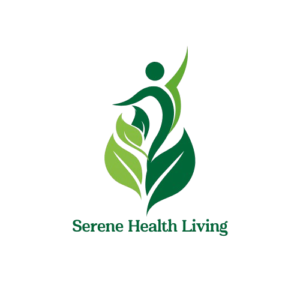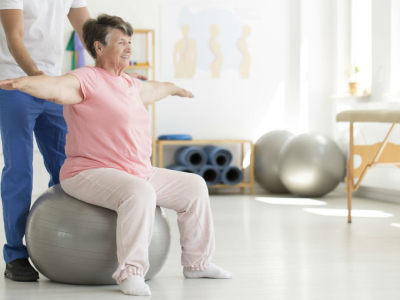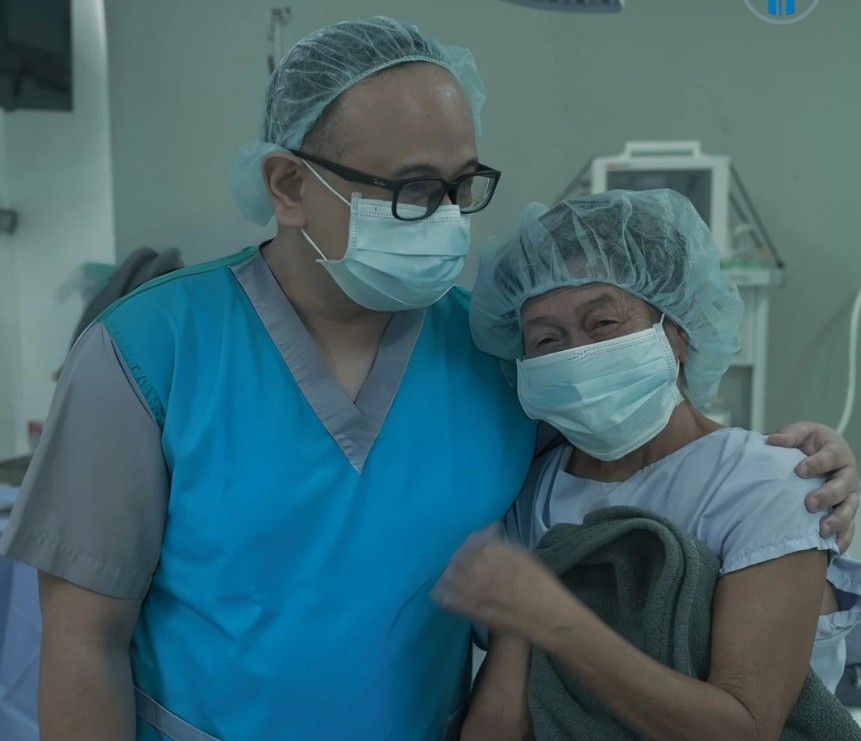Maintaining balance and smooth movement is essential for daily life. When balance or gait becomes impaired, even simple activities like walking, standing, or climbing stairs can feel challenging. These difficulties can stem from musculoskeletal weaknesses, neurological disorders, or vestibular system dysfunctions. Professional support is critical for restoring stability and preventing further complications. Osteopractic Physical Therapy of Central Indiana offers comprehensive Balance and Gait Disorders Treatment Fishers, IN designed to help patients regain confidence, independence, and quality of life.
Understanding Balance and Gait Disorders
Balance and gait disorders refer to conditions that disrupt a person’s ability to maintain stability while standing or walking. These disorders may develop gradually due to aging or manifest suddenly following an injury or neurological event. The vestibular system, responsible for detecting head movement and spatial orientation, works closely with the somatosensory system, which senses body position and movement. Together, they enable smooth, coordinated motion. When either system is compromised, balance and gait problems can occur, increasing the risk of falls, injuries, and decreased mobility.
Musculoskeletal issues such as muscle weakness, joint instability, or postural misalignment may exacerbate these disorders. Neurological conditions, including stroke, Parkinson’s disease, or traumatic brain injuries, can severely impair balance and coordination. Early evaluation and intervention are critical to prevent further deterioration and support safe, functional movement.
Common Conditions That Affect Balance
Several conditions frequently lead to balance and gait problems. Understanding these causes is important for effective management through targeted therapy.
Benign Paroxysmal Positional Vertigo (BPPV): BPPV is a disorder of the inner ear where tiny crystals of calcium dislodge and interfere with normal fluid movement, causing brief episodes of dizziness or spinning sensations. Patients may experience nausea, unsteadiness, and difficulty walking. BPPV can significantly affect daily activities, but specialized therapy can alleviate symptoms and improve stability.
Neurological Conditions: Disorders such as Parkinson’s disease, multiple sclerosis, stroke, or brain injury often impair the body’s coordination and proprioception. These conditions can disrupt normal gait patterns, cause postural instability, and increase the risk of falls. Consistent and structured physical therapy is crucial for improving mobility and reducing complications.
Injury-Related Balance Problems: Accidents, falls, or traumatic injuries may damage bones, joints, or soft tissues, affecting stability. Even after initial healing, patients may experience weakness, reduced coordination, or fear of falling. A comprehensive rehabilitation plan addresses both physical deficits and confidence restoration.
How OPTCI Approaches Balance and Gait Treatment
Osteopractic Physical Therapy of Central Indiana delivers specialized Balance and Gait Disorders Treatment Fishers, IN through a patient-centered approach. Every individual receives a thorough evaluation that includes movement screening, gait analysis, and review of medical history. Certified physical therapists identify underlying causes, whether vestibular, musculoskeletal, or neurological, and develop customized treatment plans that match each patient’s needs and goals.
By examining walking patterns, posture, strength, and stability, therapists can determine the most effective strategies to restore balance and improve functional movement. This targeted evaluation ensures that therapy addresses root issues rather than just temporary symptoms, promoting lasting results.
Treatment Techniques at OPTCI
Balance and gait therapy at OPTCI involves a combination of exercises, strategies, and hands-on techniques designed to restore stability, coordination, and confidence.
Balance Retraining Exercises: Patients engage in exercises that challenge stability and improve proprioception. These activities may include standing on uneven surfaces, practicing controlled weight shifts, and performing dynamic balance tasks. Regular practice enhances the body’s ability to maintain equilibrium during daily activities.
Strengthening and Coordination Routines: Targeted strengthening exercises improve muscle function, particularly in the core, legs, and hips, which are critical for maintaining balance. Coordination routines help synchronize movements, reduce unsteady gait, and support smooth transitions between positions.
Fall Prevention Strategies: Therapists teach practical techniques to reduce fall risks, including safe turning methods, proper posture adjustments, and strategies for navigating stairs or uneven terrain. Patients also learn how to adapt their environment to minimize hazards at home and work.
Lifestyle Adjustments: Alongside physical exercises, patients may receive guidance on activity pacing, adaptive equipment, and daily routines that enhance mobility. Lifestyle adjustments complement therapy sessions and support long-term independence.
Ongoing Monitoring and Progress Assessment: Therapists regularly track improvements in stability, gait, and confidence. Progress evaluations allow adjustments to the treatment plan, ensuring that patients continue advancing toward their goals and achieving sustainable results.
Benefits of Professional Balance and Gait Therapy
Receiving expert Balance and Gait Disorders Treatment Fishers, IN at OPTCI offers numerous advantages.
Enhanced Stability and Confidence: Structured therapy strengthens the body and refines motor control, enabling safer movement during daily activities. Patients often regain confidence to perform tasks independently without fear of falling.
Reduced Risk of Falls and Injury: Balance-focused therapy significantly lowers the likelihood of falls, which is especially important for older adults and individuals recovering from neurological events or injuries.
Improved Functional Independence: Patients experience better performance in daily life, from walking and climbing stairs to standing and reaching. Therapy promotes self-reliance and reduces dependence on caregivers or assistive devices.
Faster Recovery from Injury or Age-Related Decline: Early intervention accelerates rehabilitation following injuries and helps counter age-related loss of balance. Regular therapy can maintain mobility and preserve quality of life.
Why Choose OPTCI for Balance and Gait Disorders Treatment Fishers, IN
OPTCI provides specialized care led by certified physical therapists with extensive experience in managing balance and gait disorders. Every patient receives a personalized plan that addresses specific challenges and goals. OPTCI combines advanced evaluation tools with hands-on therapy techniques, ensuring high-quality, evidence-based care. The patient-centered approach focuses on long-term results, helping individuals regain independence, prevent falls, and enjoy life with renewed confidence.
Real Patient Outcomes
Many patients at OPTCI experience significant improvements in mobility, confidence, and overall quality of life. Individuals recovering from stroke, injury, or age-related balance issues report safer walking, better coordination, and reduced fear of falling. These outcomes reflect the effectiveness of professional therapy combined with consistent practice and guidance.
Takeaway
Professional Balance and Gait Disorders Treatment Fishers, IN is essential for maintaining mobility, independence, and quality of life. Osteopractic Physical Therapy of Central Indiana offers comprehensive evaluations, personalized treatment plans, and ongoing support to help patients restore stability and confidence. Whether managing age-related changes, recovering from an injury, or addressing neurological conditions, therapy at OPTCI provides the guidance, exercises, and strategies needed to move safely and effectively. Taking action today can prevent falls, improve function, and ensure a higher quality of life for years to come.
Frequently Asked Questions (FAQs)
How long does balance and gait therapy take?
Treatment duration varies depending on the severity of the condition and individual goals. Some patients see improvement within a few weeks, while others benefit from ongoing therapy for several months.
Can these treatments prevent falls?
Yes. Targeted exercises and training reduce fall risk by improving strength, coordination, and stability. Patients also learn practical strategies for safer movement.
Is therapy suitable for older adults?
Absolutely. Balance and gait therapy is highly effective for older adults, helping maintain mobility, independence, and confidence in daily activities.
How do I know if I need a balance evaluation?
Signs such as dizziness, unsteady walking, frequent falls, or difficulty navigating stairs indicate a need for professional assessment. Early evaluation can prevent complications and support better outcomes.
Can therapy help after a stroke or injury?
Yes. Rehabilitation for stroke or injury focuses on restoring muscle strength, coordination, and balance. Patients often regain functional independence with structured therapy.







